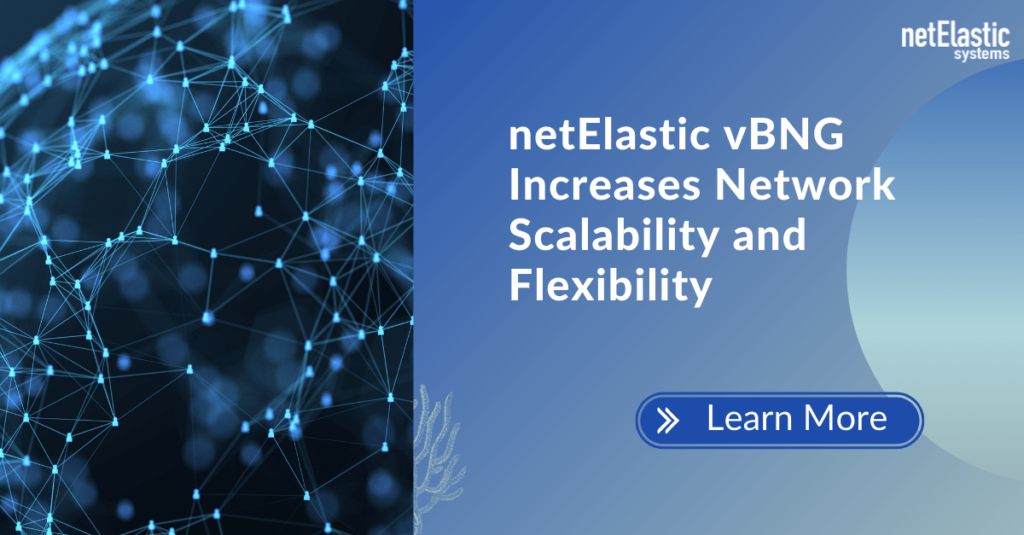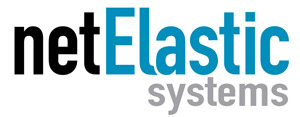Broadband service providers are focusing on signing up new subscribers. However, obtaining and supporting new customers can be expensive. That’s where software-based BNGs can help.
Residential subscribers are continuing to demand more bandwidth. Adding more subscribers compounds this challenge. As a result, broadband network gateways (BNGs) have become a critical piece of network infrastructure.
BNGs aggregate traffic from many subscribers and route it to the network of the service provider, performing subscriber management functions such as authentication, authorization, and accounting of subscriber sessions. Once connected, a subscriber can access the broadband services delivered by their provider.
With the increasing importance of BNGs, broadband providers now have a choice. Should they purchase hardware-based or software-based BNGs. In this blog, we’ll look at which type of BNG is better equipped to help you grow your subscribers (and not your costs). Let’s start by examining a few key criteria.
Scalabililty
Signing up new subscribers means more bandwidth demand, which places a premium on network scalability. Unfortunately, this presents a problem with hardware-based networks.
The high upfront costs of proprietary, hardware-based routers may force some broadband providers to limit their capital expenses by purchasing proprietary BNGs that only meet today’s bandwidth requirements.
This was acceptable when network traffic was fairly static and predictable. That’s not the case today. In an environment of increasing data traffic, hardware-based BNGs require broadband providers to increase capacity by adding more proprietary, closed-system BNGs. Bottom line, traditional hardware-based BNGs are very difficult to scale elastically, and thus can’t support continual increases in bandwidth demand.
In contrast, software-based vBNGs counter the inflexibility (and high costs) of traditional network routers by decoupling network functions from proprietary hardware appliances. With networking resources separated from the physical infrastructure, you don’t have to purchase additional hardware appliances every time you need additional network capacity. You can quickly add network capacity with a few simple software commands.
Changes can be made significantly faster. And this makes it much easier to keep pace with network demands from an expanding subscriber base.

BNG Deployments
When capacity is reached on a hardware-based (or fixed-capacity BNG), orders have to be placed for new BNGs. And purchasing, configuring, and installing hardware-based routers is complex, time-consuming, and expensive.
Virtual BNGs are easy to deploy, since they’re software-based solutions. Operational improvements from deploying vBNGs include reductions in network planning time, order-to-service times, and installation times. By eliminating proprietary hardware, broadband providers can quickly and easily deploy vBNGs. Software-based BNGs can also be located at the network edge (closer to subscribers), so broadband providers can maximize throughput and low-latency applications.
Costs
Achieving subscriber growth is important. But so is profitability. And a key factor in service provider profitability is infrastructure investments.
When we look at infrastructure investments, virtual BNGs are more cost-effective for a number of reasons. One reason is it reduces the number of servers you need. Hardware-based BNGs have to continually be purchased when their capacity is reached.
vBNGs also enable you to use less expensive x86 servers, rather than expensive proprietary network equipment. And the biggest savings are on the server side.
Let’s now take a closer look at traditional hardware-based vBNGs (from Cisco or Juniper). They typically run on ASIC routers, which have a very long development lifecycle. Since the next iteration cycle may be many years away, legacy router manufacturers typically put all possible features into their ASICs. Of course, combining all potential features into one ASIC chip translates into high costs. This also means broadband providers may be paying for features they don’t want or need.
Broadband providers need to balance subscriber growth with infrastructure investments. Software-based BNGs lower infrastructure costs, making it more profitable to sign up new subscribers.
Performance

Habits are hard to break. And many people have been buying hardware-based BNGs from vendors like Cisco and Juniper for a long time. As a result, some people may wonder if software-based BNGs have enough performance to meet their network demands.
With that in mind, Intel and netElastic have been working together to increase the performance level of vBNGs. Recently, Intel and netElastic test results showed a significant achievement reaching 1 Tbps of throughput on netElastic vBNGs running on 4th Gen Intel Xeon Scalable processors. These tests demonstrated that vBNGs are high-performance and can scale as network throughput grows.
Conclusion
At the beginning of this blog, we asked whether hardware or software-based BNGs would be better to help you grow your business, and not your costs. We looked at different criteria, including:
- Scalability
- Deployments
- Costs
- Performance
After reviewing those criteria, it seems clear that software-based BNGs are the best choice. And deploying virtual BNGs are a great first step in moving from a hardware-centric network infrastructure to a software-based infrastructure that can be continually updated (in a cost-effective manner).
To learn more about how broadband providers are benefitting from vBNGs, please read any of the following netElastic vBNG customer case studies:

